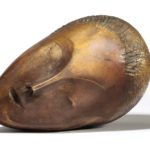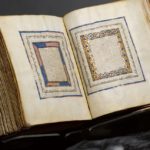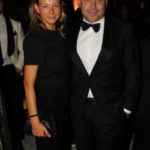
London.- The Science Museum in South Kensington is proud to present “A time-eating clock – a story of invention” on view until October 30th. The centrepiece of the exhibition is Dr John Taylor’s ‘Midsummer Chronophage Clock”, one of only two clocks in the world to show the experience of relative time. Developed by British inventor Dr John C Taylor, the clock is inspired by the idea that everyone experiences time differently. Alongside the ‘Midsummer Chronophage’ clock are two important clocks from the history of timekeeping – one of the earliest examples of pioneering clockmakers, the Fromanteel family’s work, and a workshop clock of British clockmaker John Harrison (1693-1776).
The ‘Midsummer Chronophage’ clock is just one invention in Dr John Taylor’s life’s work. His most successful invention, a kettle control, is used 1 billion times every day. The ‘Midsummer Chronophage’ clock is the second of Dr Taylor’s chromophage clocks, following the Corpus Clock, a large sculptural clock outside of the Taylor Library at Corpus Christi College, Cambridge. The clock’s face is a rippling 24-carat gold-plated stainless steel disc, about 1.5 metres (4 ft 11 in) in diameter. It has no hands or numbers, but displays the time by opening individual slits in the clock face backlit with blue LEDs; these slits are arranged in three concentric rings displaying hours, minutes, and seconds. The dominating visual feature of both clocks is a sculpture of a grim-looking, devouring, metal insect similar to a grasshopper or locust. The sculpture is actually the clock’s escapement. Taylor calls this beast the Chronophage (literally “time eater”, from the Greek ‘chronos’ (time), and ‘phago’ (I eat). It moves its mouth, appearing to “eat up” the seconds as they pass, and occasionally it “blinks” in seeming satisfaction.
The creature’s constant motion produces an eerie grinding sound that suits its task. The hour is tolled by the sound of a chain clanking into a small wooden coffin hidden in the back of the clock. Conceived as a work of public art, the Chronophage reminds viewers in a dramatic way of the inevitable passing of time. Taylor deliberately designed it to be “terrifying”: “Basically I view time as not on your side. He’ll eat up every minute of your life, and as soon as one has gone he’s salivating for the next.” Others have described it as “hypnotically beautiful and deeply disturbing”.

The Science Museum as an institution has been in existence for about a century and a half. It has its origins in the Great Exhibition of 1851, held in Hyde Park in the huge glass building known as the Crystal Palace. The popularity of the exhibition ensured a large financial surplus, which its patron Prince Albert suggested should be used to found a number of educational establishments on the land available nearby. The first of these was the South Kensington Museum, opened in 1857 on land which is now part of the Victoria and Albert Museum.The South Kensington Museum’s first building was an iron-framed structure clad in sheets of corrugated iron. Its ugliness and factory-like character soon caused it to be known by its nickname, the ‘Brompton Boilers’. It was opened to the public on Wednesday 24 June 1857 after a private view by HM Queen Victoria the previous Saturday evening. It was a principally a museum of the industrial and decorative arts, but also included a few miscellaneous science collections such as Animal Products, Food, Educational Apparatus, and Building Materials. Within the building was a separate exhibtion of machinery organised by Bennet Woodcroft, the Superintendent of the Patent Office. As well as contemporary apparatus, the Patent Office Museum also included historical items such as an early Boulton and Watt beam engine and Symington’s marine steam engine of 1788. The locomotives ‘Puffing Billy’ of 1814 and Stephenson’s ‘Rocket’ of 1829 were put on display in 1862.
A collection of ship models and marine engines was formed by the South Kensington Museum in 1864 and soon added to. The general expansion was such that during the 1860s the Science Collections were gradually moved across Exhibition Road into buildings originally constructed for the International Exhibition of 1862. These collections continued to grow, but by a sequence of sudden additions and changes rather than by any consistent planning. A major step forward came in 1876, when an exhibition, the ‘Special Loan Collection of Scientific Instruments’ was held. It was a great occasion. Instruments and equipment from many countries were displayed and public lectures given on the progress of science world-wide. At its end, many of the exhibits were retained to form the basis of what are now scientific collections of international importance. In 1883 another change of emphasis occurred when the contents of the Patent Office Museum were formally transferred to the South Kensington Museum. At about the same time a Science Library was established which ever since has served the needs of Museum staff, college students and the general public. From 1893 the Science Collections had their own Director but were still administered as part of the South Kensington Museum. The accommodation was by now quite inadequate and the scientific community argued strongly for new and appropriate buildings what was becoming a nationally-significant musum in its own right. Visit the museum’s website at … http://www.sciencemuseum.org.uk







